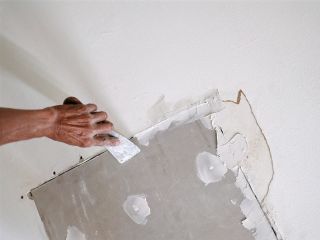
Understanding Drywall: A Quick Overview
Drywall, also known as gypsum board, Sheetrock, wallboard, or plasterboard, is a widely used construction material for walls and ceilings. While it is known for its durability and affordability, drywall can face various issues over time. From small cracks to significant water damage, understanding these common problems can help you maintain the integrity and appearance of your home.
Common Drywall Problems
1. Failing or Too Tight Joints
Drywall joints are typically secured with tape and mud, placed over studs for support. If a joint does not align with a stud, it may fail over time. To prevent this, ensure proper measurements and planning before installation. If a joint is too tight, it can lead to cracking. A gap of at least 1/8 inch between panels is recommended to allow for expansion.
2. Over-sanding Wallboard Paper
After applying joint tape and mud, sanding is necessary for a smooth finish. However, excessive sanding can damage the wallboard surface. To avoid this, use a light source to highlight imperfections and sand only the necessary areas.
3. Water Stains on Plasterboard
Water stains can occur from brief water exposure and, while not as severe as water damage, they can detract from your home's appearance. Various products are available to eliminate these stains, and once treated, you can repaint the area for a fresh look.
4. Wallboard Water Damage
Excessive water exposure can lead to significant wallboard damage, potentially causing structural issues and mold growth. If you suspect water damage, it's crucial to address the source of the water and repair the drywall promptly to prevent further complications.
Additional Common Issues
5. Cracks in the Drywall
Cracks can develop due to settling, temperature changes, or improper installation. Small hairline cracks can often be repaired with spackle, while larger cracks may require more extensive patching and repainting.
6. Nail Pops
Nail pops occur when nails or screws used to secure the drywall to the studs become loose and push through the surface. This issue is typically cosmetic but should be addressed to maintain a smooth finish. Simply re-secure the fastener and cover the area with joint compound.
7. Sagging Ceilings
Sagging ceilings can be a sign of structural issues or excessive weight. If you notice sagging, it’s essential to investigate the cause and make necessary repairs to prevent further damage.
Conclusion
By understanding these common drywall problems and their solutions, you can maintain the beauty and integrity of your home. Regular inspections and timely repairs can save you from more significant issues down the line.
Contact Us Now
If you encounter any drywall issues or need professional assistance, don't hesitate to reach out to us at Drywall Repair Malibu. Our experienced team is ready to provide high-quality drywall repair and installation services tailored to your needs. Contact us today for a free consultation and let us help you keep your home looking its best!

